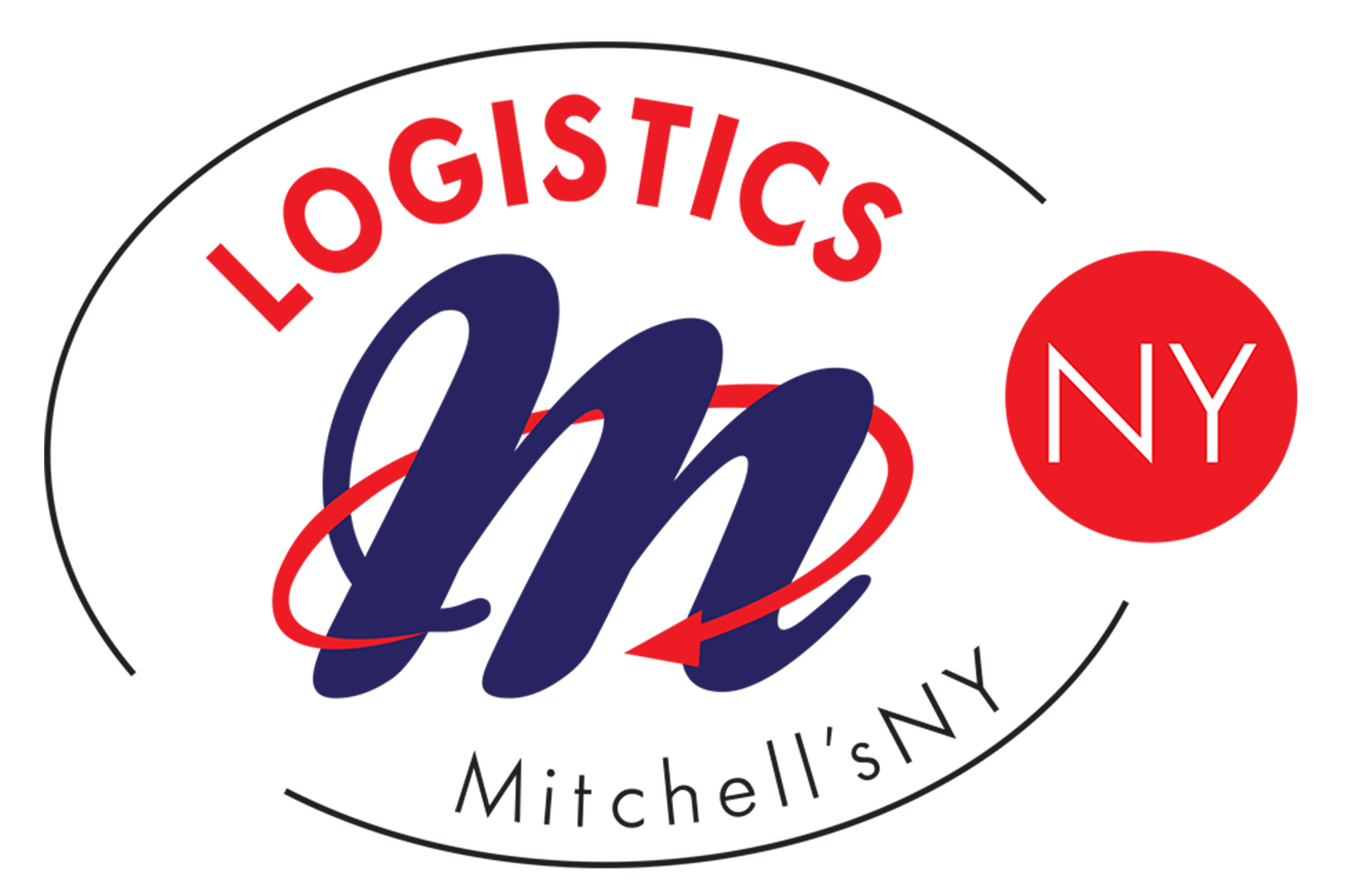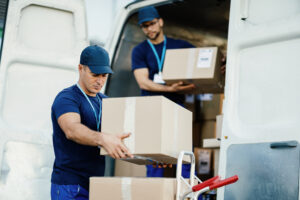
Over the last three decades, changes in technology have redefined supply chain management. Gone are the days when the transportation of products from supplier to seller and onto the customer was limited to trucks, trains and planes.
Nowadays, innovative new vehicles and aircraft stand to revolutionize last mile logistics, while everything from printing machines to mobile apps make it easier to supply products and pinpoint destinations along delivery routes. In logistical terms, the following technologies could offer infinite growth potential:
-
Driverless vehicles.
Though the technology is only in its infancy, driverless vehicles have been a topic of much speculation — as well as controversy — in the commercial sector. In a world where conventional vehicles account for vast amounts of domestic deliveries, vehicles that don’t require drivers could potentially relieve companies of the overhead that comes with operating manned vehicle fleets.
As the technology spreads, driverless vehicles could reduce the need for numerous jobs and tasks that involve driving and could clear up traffic congestion for faster deliveries. Further last mile benefits of driverless vehicles include:
- 24/7 operation. Driverless vehicles won’t be confined to human work schedules and can, therefore, be used to deliver products during off hours, weekends and holidays.
- Expanded delivery routes. With driverless vehicles, a company can expand its area of coverage and include more hard-to-reach destinations.
- Improved customer satisfaction. With the factor of human error removed from the equation, driverless vehicles will be able to deliver products with fewer routing mishaps, late arrivals and damaged packages.
Though the technology is at least a half-century away from majorly changing the traffic landscape, driverless vehicles have come to be viewed as an increasingly serious prospect among various corners of the retail and transportation sectors.
-
3D printing.
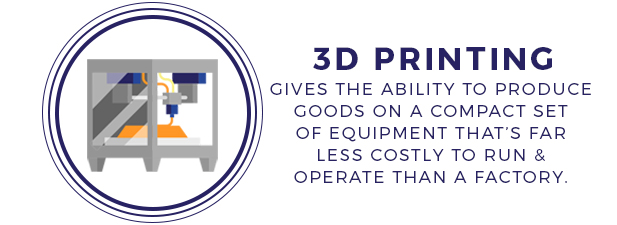
Three decades ago, the concept of 3D printing was little more than a futuristic fantasy. In recent years, however, the concept has materialized in the form of machines that can print a variety of objects and goods through computer-controlled successive layering. Though the technology has a long way to go before it reaches the limit in terms of objects that could actually be produced with such means, 3D printing has the potential to boost production and lower costs in the following product categories:
- Non-perishable foods. Hard consumables that have traditionally been produced in factories — chocolates, crackers, pasta — could potentially be made with 3D printers.
- Apparel. Use of the technology has already been implemented for the manufacturing of eyewear, athletic shoes and even certain undergarments.
- Vehicles and aircraft. In its most amazing application yet, 3D printing technology has been responsible for numerous components in experimental models by automaker Koenigsegg and aircraft manufacturer Airbus.
In the realm of supply chain management, 3D printing could give manufacturers the ability to produce various goods on a relatively compact set of equipment that would be far less costly to run and operate than a factory.
Due to the compactness of 3D technology, printers could also be put to use virtually anywhere, which would spare companies the overhead of large, offsite production facilities. For retailers that might ultimately produce a majority of products via 3D printing, the method could allow for instant reproduction of stock on an as-needed basis. Furthermore, the technology’s ability to produce auto components could enable sellers to customize delivery vehicles according to personalized needs.
-
Drones.
Though primarily associated with military operations, drone technology also carries vast potential in the delivery of products to consumers. Drones operate via ground control or inbuilt technology, and they can be put to use for airborne deliveries without the risks that a human pilot would encounter. The compact nature of drones also makes it possible to send them into areas that would be difficult, if not dangerous or impossible, to reach with manned aircraft or vehicles. In terms of product delivery, drone technology offers the following benefits:
- Speedier deliveries. Whereas on-ground delivery is limited by factors such as street routes and stop lights, drones can fly over buildings, rivers and grasslands to get from points A to C without a hitch.
- Deliveries to anywhere. Drones can fly over dangerous areas that a manned vehicle would have to go miles off-route in order to bypass. Likewise, drones can deliver straight to the door of penthouse suites, remote hilltop estates and other destinations that might otherwise be difficult from a logistics standpoint.
- Reduced overhead. Thanks to their small size and lack of routing limitations, drones could significantly reduce the need for drivers, delivery trucks and all the associated costs of wages, fuel and vehicle maintenance.
Essentially, drones are free from the vehicular confines of land mazes and could relieve companies of major overhead, while offering faster deliveries to a wider array of destinations.
4. Augmented reality.
There’s only so much information that maps can convey about delivery routes or what a photo might reveal about a given destination. By contrast, augmented-reality apps offer far greater range and nuance in terms of the dimensions and features of a delivery point. With augmented-reality software on hand, logistics teams and delivery personnel reap the following last mile advantages:
- Annotated site features. An augmented reality app might offer detailed information on the features seen in the street photo of a delivery destination, such as the names of each office building and public monument.
- Multi-dimensional perspectives. Imagine being able to click an object within an image, and spin or flip the object to see it from above, behind or the right and left sides. Augmented reality apps can offer such features without the need for complex camerawork or bitrate/memory-intensive video files.
- Sensory features. Some augmented reality apps are being equipped with sensory features, which in the context of delivery routes, could include the sounds and smells that drivers might encounter along key destination points.
If a delivery is being made to a restaurant or retailer that coexists within a much larger building, but only the business name and building address are provided with the delivery instructions, an augmented reality app could offer pinpointed annotations about the location and floor of the business in question.
How 3PLs Can Help Retailers With Last Mile Logistics

As technology continues to revolutionize the means for getting products out to customers at greater speeds in virtually any location, third party logistics (3PL) providers are handling the groundwork. This allows companies to focus on their products, knowing that 3PLs will handle things like warehousing, freight negotiation and order fulfillment. Whether operating from a storefront or a website, a company can reap the following benefits by partnering with a 3PL:
-
Expert support.
For most retailers, selling products is an all-consuming job in and of itself. When it comes to in-house expertise, energies are best focused on the crafts and tools of the trade. Jewelry makers are generally best at making jewelry. Clothing boutiques are usually best at producing or procuring apparel, and bakers are most in their element during the hours spent preparing cakes and pastries.
For entrepreneurs in these and various other fields, factors such as warehousing and delivery are obligations that fall beyond the scope of interest. Consequently, a lot of businesses lag in the area of supply chain management. Therefore, by switching such tasks to a 3PL, a business can benefit in the following ways:
- Superior management. With an expert 3PL handling backroom tasks such as freight negotiation, forecasting and auditing, a business can simply focus on front-end operations.
- Better productivity. With various backroom aspects managed elsewhere, businesses have more time to spend on product making.
- Improved reputation. With everything running smoother and more efficiently than before, a retailer could see customer growth through positive word of mouth.
-
Boosted efficiency.
Productivity is at the heart of all businesses. With the tasks of supply chain management relegated to a 3PL provider, businesses can amp productivity because all the time that would have previously been spent procuring shipments and fulfilling orders is now put to better use. Additionally, overhead costs can be significantly reduced with a 3PL because the expensive hiccups of in-house backroom mismanagement are removed from the equation. In summary, a 3PL can relieve a business of numerous hectic tasks, including:
- Order fulfillment. Making products and displaying them in a storefront or on a website is enough work for most businesses. The tasks of receiving orders and delivering products are more aptly handed by a 3PL provider.
- Packaging and labeling. The work involved with filling and sealing packages and applying address labels can be a lot more hectic and time-consuming than most budding entrepreneurs might realize. Though such tasks are beyond the scope of the average retailer, they’re right up the alley of a 3PL.
- Return requests. Returns are often touchy issues that must be handled with care, and 3PLs are experts at handling such situations in a manner that makes customers and retailers happy.
-
Swift adaptability.
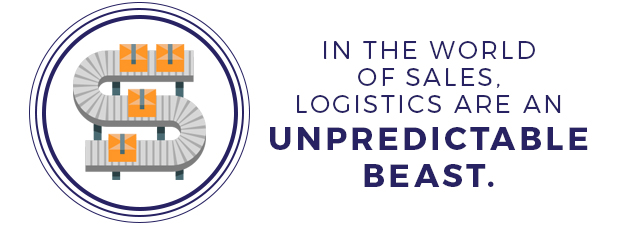
In the world of sales, logistics are an unpredictable beast. For instance, the factors that make July a highly successful month could be absent come fall or winter. In certain markets, sales could ride consistently high for a number of years, only to come crashing down in the face of changing trends or disruptive technology. Then again, sales might go from healthy to overwhelming, and a company could become swamped with fulfillment demands. Whether sales are brisk or modest, a 3PL can help a company do the following:
- Deal with sales spurts. With a 3PL handling excess volumes of orders, companies don’t have to overwork themselves just to stay on top of everything during peak sales periods.
- Maintain a tight workforce. When a company can simply carry on with business as normal and stick to its regular schedule, regardless of sales volume, employees don’t get overworked or become disenchanted.
- Cope with changes in stride. A 3PL exists to fulfill supply chain management needs in any given marketplace. As such, 3PLs are versed at helping companies handle changes in logistics.
In an ever-fluctuating marketplace, many companies have reaped the rewards by switching last mile tasks to 3PLs. However, many more companies could stand to benefit as well if they only knew about the advantages.
-
Minimized errors.
When it comes to operating a business, one mistake could have tremendous repercussions. Whether it’s down to a public relations gaffe or a faulty line of stock that leads to a rash of angry product returns, mistakes and controversies can seriously cut down a company’s reputation and customer base.
In today’s world of Yelp and other online customer feedback networks, one regretful move could mark the end of a business altogether. When it comes to stocking shelves, satisfying orders and handling customer disputes, 3PLs can help companies minimize risks by achieving the following:
- Guaranteed fresh shipments. With a 3PL, stock doesn’t arrive late, defective, broken or perished — it arrives on time, fresh and intact for reliable shelf life.
- Ensured smooth deliveries. A 3PL will also ensure each package arrives at a customer’s doorstep on time, as ordered and free of damage or defects.
- Resolved customer disputes. Regardless of a given customer’s complaints, 3PLs do their best to bring each party to a happy conclusion.
In-house supply chain management is a risky proposition for new and existing businesses alike. In today’s crowded marketplace, where customers can easily drop one company for a competitor, retailers shouldn’t risk delegating fulfillment tasks among company personnel when 3PLs exist to give full attention to that area of work.
-
Improved focus
A successful entrepreneur focuses on his or her own strengths and transfers all other lines of work to hired hands. Otherwise, it would be impossible to stay focused on the concept of the business itself.

In small, medium and large companies, the pattern is much the same: Founders and inner groups utilize their own skills and delegate other tasks to third parties. With 3PLs handling the aspects of business that aren’t specific to any one seller, the sellers themselves can harness their strengths within the marketplace and also satisfy the following goals:
- Avoid routing confusion. Deliveries don’t get stalled or misrouted for days or weeks on end when handled by 3PLs, which have routes and destinations mapped out for every order.
- Provide package tracking. As packages are en route to destinations, some customers wish to check in on the progress of their shipments. A 3PL can provide up-to-date tracking for any package.
- Ensure timely deliveries. With a 3PL handling everything from packaging to shipping, retailers don’t need to set aside time to handle orders. Therefore, packages ship and ultimately arrive at destinations with greater than average speeds — which in turn spurs more orders.
Partnerships between companies and 3PLs are the perfect balancing act. The company stays focused on product production, while the 3PL ensures faster, more reliable deliveries that ultimately lead to further sales.
Partner With a 3PL Provider
If you run a company that sells products to customers in far-off locations, a 3PL could be a boon to your ground game. Even if you simply run a local storefront, customers from across town — especially those in traffic-congested big cities — would likely appreciate the option of getting prompt deliveries right to their doorsteps. Regardless of the locale from which your business operates, explore the potential of partnering with a 3PL that serves businesses in your market.
In New York City and the tri-state area, Mitchell’sNY Logistics is a one-stop delivery service that locals count on for everything from newspapers to beverages. With our commitment to the needs of everyone we serve, we could rocket your business to newfound levels of success. To learn more about what we can do for your company, contact us online today.
